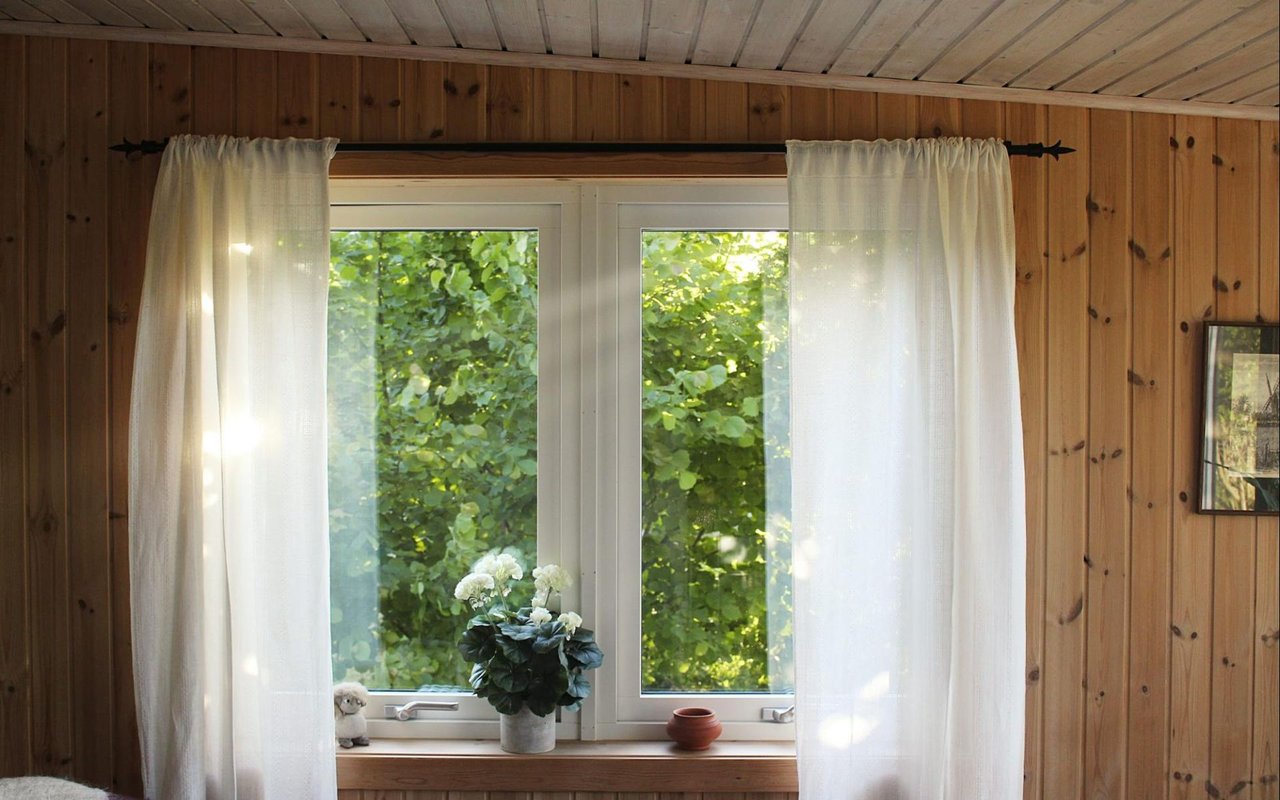Creating a comfortable and welcoming home is important, but when you have young children, safety has to take center stage. Every corner, cabinet, and coffee table has the potential to become a hazard if it’s not properly addressed. Whether you're expecting your first child or navigating toddlerhood, making your home safe for children is one of the most valuable things you can do to create peace of mind.
In this guide, you’ll find clear and practical tips that go beyond baby gates and outlet covers. It’s about creating an environment where your little ones can explore, learn, and grow while minimizing risks and preventing accidents.
Start With a Room-By-Room Assessment
To effectively childproof your home, begin by walking through each room at a child’s eye level. Kneel or sit on the floor to spot dangers you might otherwise overlook. You’ll quickly notice exposed cords, unstable furniture, sharp corners, and reachable breakables. This perspective helps you assess the space as your child sees it: full of opportunities for exploration and curiosity.
In bedrooms, secure dressers and bookshelves to the wall to prevent tipping. In the kitchen, make sure that cleaning supplies and sharp tools are stored high or locked away. In bathrooms, look for slip hazards and easy access to medications or small items. Living areas often require anchoring furniture and covering corners and edges. Each space has its own risks, so break the process down into manageable zones.
In bedrooms, secure dressers and bookshelves to the wall to prevent tipping. In the kitchen, make sure that cleaning supplies and sharp tools are stored high or locked away. In bathrooms, look for slip hazards and easy access to medications or small items. Living areas often require anchoring furniture and covering corners and edges. Each space has its own risks, so break the process down into manageable zones.
Anchor Heavy Furniture and Appliances
One of the most overlooked dangers in homes with young children is the risk of furniture and appliances tipping over. Children are naturally inclined to climb, especially on items like bookshelves, dressers, and TV stands. Without proper anchoring, these items can tip and cause severe injuries.
Use furniture anchors or anti-tip brackets to secure top-heavy items to the wall. Modern kits are easy to install and blend discreetly with most furniture. Flat-screen TVs should also be secured with anti-tip straps or mounted to the wall. Make this a priority in living rooms, bedrooms, and playrooms where your child spends the most time.
Use furniture anchors or anti-tip brackets to secure top-heavy items to the wall. Modern kits are easy to install and blend discreetly with most furniture. Flat-screen TVs should also be secured with anti-tip straps or mounted to the wall. Make this a priority in living rooms, bedrooms, and playrooms where your child spends the most time.
Use Outlet Covers and Power Strip Protectors
Electrical outlets are at the perfect height for crawling toddlers to poke and prod with fingers or toys. To prevent accidental shock, insert outlet covers into every unused socket in the home. Choose sliding plate covers for outlets that are regularly used, as they offer safety without needing to remove small parts.
Power strips and cords also pose risks. Use power strip covers to keep little hands away from plugs. Wrap and secure any extra cord length to reduce tripping or pulling hazards. Keeping cords out of sight and reach is a simple but effective way to reduce this danger.
Power strips and cords also pose risks. Use power strip covers to keep little hands away from plugs. Wrap and secure any extra cord length to reduce tripping or pulling hazards. Keeping cords out of sight and reach is a simple but effective way to reduce this danger.
Keep Choking Hazards Out of Reach
Children under age three are especially vulnerable to choking. Small objects can seem harmless but pose serious risks. Coins, buttons, batteries, marbles, and even pieces of food like grapes or hot dogs can be dangerous if swallowed.
Regularly scan your floors and low surfaces for small items. Toys with detachable pieces should be stored high or away from small hands. Use a toilet paper roll as a simple test: if an object can pass through the tube, it's too small to be within reach. Also, keep pet food bowls off the ground during playtime, as they’re often overlooked sources of risk.
Regularly scan your floors and low surfaces for small items. Toys with detachable pieces should be stored high or away from small hands. Use a toilet paper roll as a simple test: if an object can pass through the tube, it's too small to be within reach. Also, keep pet food bowls off the ground during playtime, as they’re often overlooked sources of risk.
Install Baby Gates Strategically
Baby gates are a staple for homes with young children, but they’re only effective when installed correctly and placed in key locations. Gates should be mounted at the top and bottom of stairs, across entryways to rooms with hazards, and around any space where supervision might be difficult.
Avoid pressure-mounted gates at the top of stairs, as they can be dislodged too easily. Instead, use hardware-mounted gates for stability. Look for models with secure latches that can be opened one-handed by adults but are too complicated for small children to maneuver. Also, choose gates that match your home’s layout and décor so that they blend in while still providing safety.
Avoid pressure-mounted gates at the top of stairs, as they can be dislodged too easily. Instead, use hardware-mounted gates for stability. Look for models with secure latches that can be opened one-handed by adults but are too complicated for small children to maneuver. Also, choose gates that match your home’s layout and décor so that they blend in while still providing safety.
Lock Away Cleaning Supplies, Medicines, and Toiletries
Many common household items contain ingredients that are toxic or harmful if ingested. Cleaning products, laundry pods, medications, and even personal care items should be kept out of reach or secured in childproof cabinets.
Install childproof locks or latches on lower cabinets in bathrooms, kitchens, and laundry rooms. Consider relocating dangerous items to higher shelves until your children are older. Also, keep purses, backpacks, and guest bags off the floor, as they may contain medications or small items that children could access.
Install childproof locks or latches on lower cabinets in bathrooms, kitchens, and laundry rooms. Consider relocating dangerous items to higher shelves until your children are older. Also, keep purses, backpacks, and guest bags off the floor, as they may contain medications or small items that children could access.
Use Corner Guards and Edge Bumpers
Children are still developing balance and coordination, which makes falls and bumps inevitable. To reduce the risk of injury from sharp furniture edges, apply corner guards and edge bumpers to tables, counters, and fireplace hearths. These soft, adhesive guards can be customized to fit a variety of surfaces and removed later without damaging the furniture.
Prioritize items at your child’s height and in high-traffic areas. Coffee tables, kitchen islands, and media consoles are especially important. Even a minor bump on the wrong surface can result in bruises or cuts, so make this step part of your broader childproofing plan.
Prioritize items at your child’s height and in high-traffic areas. Coffee tables, kitchen islands, and media consoles are especially important. Even a minor bump on the wrong surface can result in bruises or cuts, so make this step part of your broader childproofing plan.
Reassess Regularly As Children Grow
Childproofing is not a one-time task. As your child grows and gains new skills, they’ll reach higher, climb better, and become more curious about their surroundings. What worked when they were crawling won’t cut it when they start walking or climbing.
Reassess your home’s safety every few months. Adjust the cabinet locks, swap out baby gates, and recheck your furniture anchoring. Stay proactive — anticipate the next phase before your child gets there. If you have multiple children at different ages, balance your safety approach to match their needs without relying too heavily on one-size-fits-all solutions.
Reassess your home’s safety every few months. Adjust the cabinet locks, swap out baby gates, and recheck your furniture anchoring. Stay proactive — anticipate the next phase before your child gets there. If you have multiple children at different ages, balance your safety approach to match their needs without relying too heavily on one-size-fits-all solutions.
Create a Safe, Comfortable Space for Learning and Play
Beyond minimizing hazards, focus on building safe spaces where your children can thrive. Designate play zones with soft flooring and age-appropriate toys. Keep art supplies, books, and games in bins that are easy to access but free of clutter. Choose furniture with rounded edges, and use rugs with non-slip pads underneath.
You don’t have to sacrifice style or warmth for safety; it’s about being thoughtful with design and layout. When your child has their own area to play and explore, they’re less likely to venture into spaces that pose more danger.
You don’t have to sacrifice style or warmth for safety; it’s about being thoughtful with design and layout. When your child has their own area to play and explore, they’re less likely to venture into spaces that pose more danger.
Build Peace of Mind With a Thoughtful Plan
Childproofing your home isn’t about removing all the fun — it’s about creating a safe foundation where your children can grow, explore, and learn with fewer risks. From anchoring furniture to managing small hazards, the effort you put in today pays off in peace of mind tomorrow. With each thoughtful choice, you’re building a home that supports every stage of your child’s journey — one safe step at a time.
Reach out to Ilona Coffey when you’re ready to reach your real estate goals in Poipu and find a wonderful home for the whole crew.
Reach out to Ilona Coffey when you’re ready to reach your real estate goals in Poipu and find a wonderful home for the whole crew.




